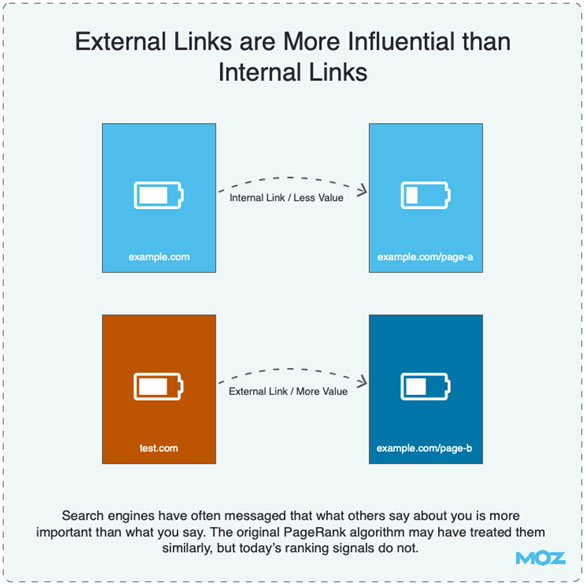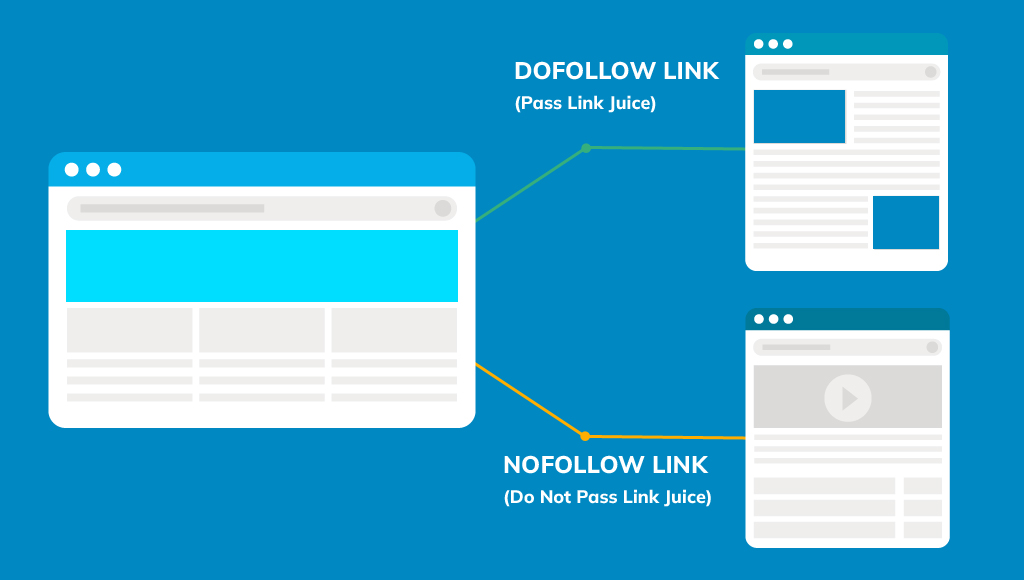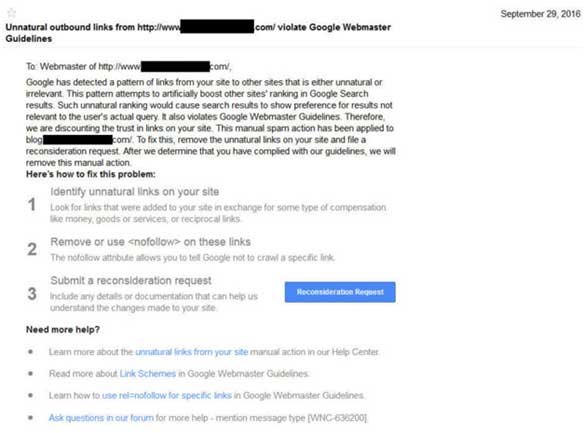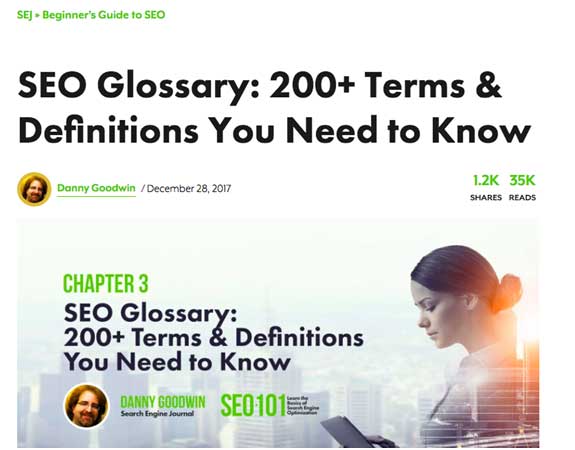
External backlinks are links that connect pages that are hosted on different domains. Any link from your website that goes to a different website is an external backlink. At the same time, any link that points to your website from a different website is also an external backlink.
External backlinks are important to gain better rankings on search engine results pages (SERPs). According to Google’s John Mueller, "Linking to other websites is a great way to provide value to your users. Oftentimes, links help users to find out more, to check out your sources, and to better understand how your content is relevant to the questions that they have."
In other words, external backlinks can count as endorsements or votes of popularity for a website. Additionally, external backlinks help boost website visibility, improve user experience, and create backlinking opportunities.

As a business owners you should invest in building a great backlink network to boost your SEO results. However, there are right and wrong ways to do that. This blog post will discuss everything that you need to know to make sure that your external backlinking strategy is rewarding and successful.
Links are the foundation of the Internet. Without them, we won’t have an easy way to get from one website to another, discover relevant and related content around our interests, and find opportunities to grow and scale in business.
As a network, external backlinks pass link equity or SEO juice from one page to another. Getting a backlink to your website is like getting a recommendation that your content is valuable. And the inverse is also true: posting links to other websites or pieces of content is also recommending that site or content.
There are two main types of links used today: DoFollow and NoFollow Links.

All links are DoFollow links by default, unless you add a "nofollow" tag to them. This means that DoFollow links are links that pass link juice; they ask Google to follow a certain website or content because it's valuable. Over time, this became a key point of contention for SEO practitioners, as some people abused this privilege to create spammy link building practices.
That's where NoFollow links come in. NoFollow links dissuade Google crawlers from considering a link as a vote of confidence for another website or content. It was developed to help decrease the proliferation of spam links on the Internet. Additionally, they help discourage paid backlinks, which violate Google guidelines.
Knowing when to use DoFollow and NoFollow backlinks can help protect you from Google penalties and subsequently see your page rank affected. After all, you don't want to pass link equity to a spammy website or content.
Use DoFollow links when:
Use NoFollow links when:
In navigating this complex world of links, you need to know which ones to use and which ones to avoid to successfully achieve better SEO rankings.
When boosting your external linking strategy, you may find yourself tempted to just pay for external links to your website. After all, it will get your website indexed faster and higher, and will be well worth the money.
However, Google is far too meticulous to reward every piece of external backlink and have it count to a website’s advantage. There are various criteria used to evaluate whether an external backlink is good or bad, including:
Bad external links are those that are found to be unnatural. Meaning, they have been injected into the page content without providing relevant value to the user. These are spammy links that were specifically created to manipulate search engine rankings, and they typically:
Google imposes manual penalties for websites that use unnatural backlinks. In fact, experts say that the big bulk of Google’s penalties involves bad backlinks. The immediate effect is a big drop in your search engine ranking, which might be hard to undo, especially when it has already taken effect.

For this reason, your external linking strategy should be aimed at incorporating only white-hat SEO techniques like natural backlinking.
In the simplest terms, natural links are links that are earned, not paid for. They are organically used to highlight a unique piece of content on a website and, in SEO, they are among the most important signals to communicate your website’s value.
Good natural backlinks come from websites that typically feature:
So where do you get natural links?
Top of the list for getting natural backlinks are reputable, authoritative websites. These are websites with high domain rankings and traffic, and low spam scores. These include news and media outfits such as CNN or the BBC and educational platforms such as TED Talks.
Granted, getting a link from any of these websites is going to be very challenging, but it’s well worth a try. If you get a vote of approval from any of these websites, that will do wonders for your reach, visibility, and SEO.
Blogs that cater to specific communities, industries, or niches are also great sources of external links. As these have a defined audience with an already existing interest or stake in your community, industry, or niche, getting a shout-out from them will help establish your brand within your circle.
You can also source natural external backlinks from influencers or aggregators that review products. The genius about this particular source is that they are found on many types of platforms and are not limited to, say, just blogging. Many of them are on social media such as Instagram and YouTube, and their content can be flexible -- from blog posts to Reels.
Additionally, opt for external backlinks from social forums where people come together online to engage with each other. Popular examples include Reddit, Discord, Medium, and Quora.
Finally, don’t discount the power of local listing sites or directories. These platforms are great for local SEO and citations, which account for almost 100 billion searches monthly.
Just as important as where you can source natural external links are where you shouldn't get them -- and the most popular examples are private blog networks.
PBNs or private blog networks are a group of websites designed to specifically link to a certain website. More often than not, they use expired domains that previously racked up domain authority and were considered credible by search engines. Upon expiration, they turned into components of a networked system to manipulate search engine results.
Many people have found PBNs to be effective, but even if they work, you should steer clear of them. They violate Google guidelines and, when caught, your website will suffer the consequences of using this manipulative form of backlinking.
Here comes the million-dollar question: how do you get good natural links to your website? Consider these tips.
The first step towards gaining organic recommendations from other websites is to put out evergreen, high-quality content on your website. Evergreen content is content that always stays relevant. And when you publish something valuable, it becomes easier to make other people want to link to it.

Some examples of evergreen content that you can publish include:
The main thing to remember is to customise your evergreen content to fit your brand or industry.
Some types of content are also more likely to generate shares, compared to others. Infographics, for example, are considered by over 50% of SEO experts to be effective for natural backlinking. One of them, for instance, saw 1,000 natural backlinks from more than 300 websites with just one infographic.
Other shareable content types include:
To harness them to their full advantage, create content types that:
It’s also a good idea to submit blog posts to community websites or industry-specific websites. Additionally, you can collaborate with influencers to increase your reach and get organic mentions. You can offer a special discount, for example, and partner with a trusted name in your niche to help spread the word.
Finally, be prepared to do some manual work. Creating an effective external linking strategy requires constant monitoring and modifications, if necessary. Look at tools like Ahref to find out how many links you need to establish a good online presence, and keep checking to see if trends change over time.
At iVersion, we harness white-hat SEO practices to help set our clients up for digital success. Our expert team will sit down with you to understand your specific backlinking objectives, and design a strategic plan to help you generate recommendations from high-value websites. Talk to us about your needs today.
Get the Right People to Manage your IT
Sign Up and Stay Informed